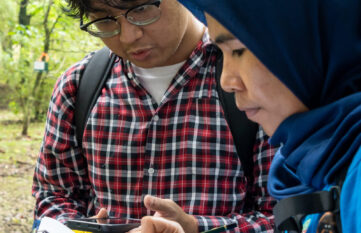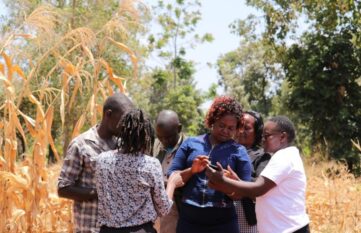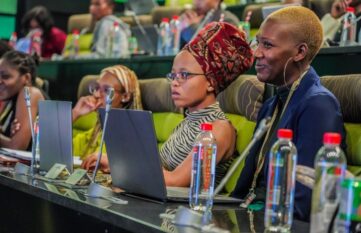How to democratize AI? Sustainable mechanisms to make earth observation data openly accessible

Earth observation (EO) data is currently transforming the way we graze cattle, plan cities, conserve forests or respond to hunger crises. AI has the potential to amplify the uses of EO data at scale. Images from satellites can already be very granular. Still, it takes a human eye and often also evidence from the ground to train artificial intelligence models so they can correctly identify the content of satellite imagery, for instance to automatically identify crop types or forest areas that should be protected. This additional effort to create training data for AI models is expensive.
Maximising the use of EO data: BMZ digilab and FAIR Forward initiate ii2030 process with Radiant Earth
What might be possible if start-ups and scientists from all over the world could access this data? Radiant Earth, a non-profit, has spent years making EO training datasets openly available. Yet, despite opening access to over 60 novel training datasets through its Radiant MLHub service, relatively few had been used. What was wrong? The BMZ digilab and GIZ’s FAIR Forward initiative sponsored an ii2030 process in order to explore the question:
How might we ensure open access to high-quality, machine learning-ready Earth observation data on a sustainable basis?
ii2030 is a system innovation methodology by Endeva that enables a group of actors to look at problem-solving from new and collaborative perspectives.
Open access does not guarantee usable data for all
Open access is often equated with “free of cost”. After all, if everybody should be able to use earth observation data, the barrier to accessing it should be as low as possible, right? In the ii2030 consultation workshops with start-ups, researchers, and funders supporting open access to Earth observation data, this equation was called into question. The system map that they created revealed that producers of validated, open datasets often lack incentives to prepare the data in a way that makes it valuable for others. And those who try to use the shared datasets, in turn, have little incentive to provide feedback. It turned out, the premise that data had to be free could, taken by itself, also hamper the availability of usable, high-quality Earth observation data.
Market mechanisms, on the other side, facilitate the matching of demand and supply. Price can be an important feedback and reward mechanism here. Likewise, establishing the marketplace and enabling matches is a service that can be monetized. Exploring the mandate of Radiant Earth from this market perspective also opens up financial models that enable the sustainability of the platform itself.
New business models and solutions for sustainable provision and use of Earth observation data
Our co-creation workshop together with Radiant Earth and international actors working with EO data explored the question: “How might we bring actors together so that demand and supply of EO data can match and generate impact?“ One new business model that emerged for Radiant Earth aims to provide the infrastructure for existing data providers to share and charge for large datasets. The new offering is called Source Cooperative, a data publishing utility being developed as the next generation of Radiant MLHub.
Another opportunity was to enable donor organizations to systematize their data procurement to achieve transparency on what datasets are already available and potentially reuse them. Radiant Earth is setting up the Cloud-Native Geospatial Foundation to increase the adoption of highly efficient state of the art data sharing practices. This will continuously help the EO field identify useful best practices for data sharing and publication – something that had been stressed also heavily in the ii2030 process.
ii2030 process strengthens Radiant Earth’s role for sustainable AI innovation and global challenges
The ii2030 process helped Radiant Earth find new paths to achieve its mission, enabling co-creation of its future role in the system together with key stakeholders. Jed Sundwall, Executive Director of Radiant Earth, said: “We’re excited about this next stage of Radiant Earth. We have witnessed remarkable innovation in the geospatial sector during the last several years, and the ii2030 process helped us identify the role we can play to help more people benefit from these innovations. The Cloud-Native Geospatial Foundation will help our community quickly identify best practices for data sharing, and Source Cooperative will provide a simple mechanism for data publication. Combined, these two initiatives will enable more people from around the world to use data to address global challenges.”
Easier, open and sustainable access to AI-ready EO data promotes local AI innovation and is one of the main goals of FAIR Forward, an initiative of the Federal Ministry for Economic Cooperation and Development that is implemented by GIZ. “Even the best earth observation data can only be used impactfully if it is easily accessible,” said Daniel Brumund, advisor at FAIR Forward. “We are excited that through the ii2030 process, Radiant Earth works on a promising business model to sustain widespread storage, access, and use of EO data for responsible AI development. This will allow entrepreneurs, data scientists, researchers, and policymakers across the world to create tools that help address pressing issues in fields such as agriculture, urban planning or disaster risk management.”


